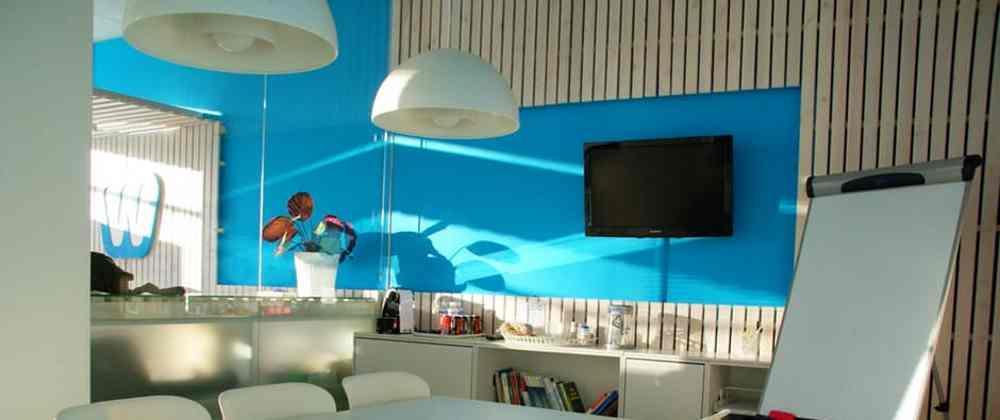Finding the Sweet Spot for your Learning Design
Sarah Flesher
You've created a new course and eagerly await feedback from your client. What do you hear? "The learners thought the course was a waste of time!", "They didn't retain anything!" As you slap your forehead in disbelief, you think to yourself, "And I thought this was a good course!".
Well, when you get that sort of feedback, it's not necessarily a comment on the quality of the course content. Rather, it points out that the course is not relevant to the learners; it's not connecting with the target audience in some way. The end result? Even if the content is solid, the program is a failure.
So, how do you find that sweet spot for your learning design? What can you do to make sure that the courses you design are appropriate for your learning audience? What combination of factors, from learners' attention span to design choices, should you consider so that you get maximum impact from your eLearning courses?
In this article, I'll discuss four important points to consider when designing your learning content that will help make it relevant to your audience and give you the best bang for your buck.
4 program design musts to consider
There are many interesting courses and books that cover on the huge number of concerns that go into designing a learning program. What I want to focus on here is my list of four key considerations for developing content that is effective and relevant. These considerations are:
- Audience demographics
- Type of content
- Types of activities to be included
- Type of client
1. Audience Demographics - Who are the Learners?
Course content is written for the learners, and you, as the content designer, should take the time to know who they are and what they can do. Two major audience demographic factors to consider in designing learning content are:
- Level of literacy: The literacy level of your audience will vary with the workplace and, in some cases, that level may surprise you. According to a 2013 Conference Board of Canada study, 48% of adult Canadians have inadequate literacy skills. Workplace literacy includes reading, writing and document use, three of the nine essential skills recognized by the Office of Literacy and Essential Skills. Computer use, another of the nine essential skills, may be a consideration if you are developing an eLearning course and need to provide course navigation and on-screen instructions.
The learners' ability to read and use documents and fluency in the first language of the workplace will affect what you write and how you write it. The tone, style and language you use for learners who are professionals with post-secondary education is very different from what you would use for learners working menial jobs. For that audience, plain language writing is the best approach.
- Age of the learning audience: Age is a big factor in designing learning content. Are you writing for an audience that is 40+ years old and experienced, or are you writing for millennials who have less experience or centennials (or iGen) who have little or no work experience? Each group may prefer a different style of course. For example, the older, more experienced worker may want a course that is in one continuous piece, where they can sit down and go through it and it's done. The millennial may want a course that is broken down into chunks and is portable. The youngest, and most tech-savvy, group will want learning that is mobile, micro, social and gamified. Each approach requires a different writing and development style.
2. Type of Content
The type of content will also influence the design of your course. Are you building training required for regulatory compliance? It this a course that is designed to create awareness or give an overview of a topic? Is the content the knowledge component of a competency-based training program? Each of these types of content require different styles of development.
- Compliance training happens because legal requirements, standards or policies and procedures must be met. The topic is typically of a serious nature and completion of the training often leads to certification. Your tone should be authoritative, but respectful to the learner. Content should be relevant to the specific workplace and any examples or scenarios used should be reality-based.
- Content that is designed to provide an overview of a topic or create an awareness can often be presented in a less formal manner. Quite often, you will have to convince the learner that they should care about the topic (global warming and recycling are good examples). This type of content lends itself well to storytelling through video or animation. You may even want to use humour, although sparingly. Even though the delivery may be less formal, the content still has to be believable.
- Competency-based training (insert link to Why Is Competency-based Training So Effective? article once it is published) or CBT has two components: a knowledge component and a practical application component. The knowledge component may be specifications, it may be a process, it may be a procedure or an explanation of how a piece of equipment works -- or it may be all of these. Whatever it is, the content must be clear and easy to follow. It must list and describe the standards to which the competency must be demonstrated and provide all of the relevant theoretical knowledge the learner needs before practicing the practical component of the training. Relevant task-related graphics and videos are all extremely useful in this type of content. Plain, concise writing is the best way to go with this type of training.
3. Types of Activities to be Included
The types of activities you use to teach and to reinforce your learning points have to be appropriate to the topic and to the audience.
For example, you may not want to create an animated "What Should We Do with Johnny's Finger?" game for a workplace first aid course. You may also think twice about using a casino theme to gamify a retirement planning course aimed at senior management.
On the other hand, an exercise where the learner uses a forklift icon to drag and drop items that should only be transported by forklift to a "Correct Answer loading dock" might be completely appropriate for learners who are taking a course in warehouse materials handling.
Creating the right interactive experiences for your learners will help keep them interested and motivated, but the wrong interaction can have the opposite effect of what you're trying to achieve. Learning who your audience is and understanding the content and how it will be applied at the workplace will help you develop the right kind of learning activities for your audience.
4. Type of Client
Although the client is not typically part of the learning audience, they do pay the bills and need to be considered in the final design of the content (hey, we all like to be paid). You need to consider:
- Client image: Is the client a conservative corporate entity, or is their brand one that portrays an outgoing, informal image? Your content has to communicate with the learner in a way that is acceptable to the client. I once wrote a scenario for a client where the characters met in a bar after work to discuss the issue they were trying to resolve. It got killed in the first draft and I was told that it was against company policy to discuss company issues in a public place and that the company did not condone mixing alcohol and business. The next draft had the characters meeting in the boardroom and was a resounding success.
- Client branding: Most corporate clients have a style guide for all of their documents, and they'll expect your content to follow it. It will describe the look and feel of their documents, font size and type and language preferences. The guide may also list dos and don'ts regarding gender reference, slang usage, references to alcohol and drugs, use of images, etc. If your client has a style guide, it's well worth your time to read it and use it in developing your content.
Conclusion
As I said at the beginning of this article, this is my list of four key considerations for developing content. You probably have your own and maybe we have some points in common. For any number of reasons, incorporating all four items on my list into your content design may not be possible nor practical. I offer them as guidelines to help you effectively reach and teach your learning audience and to keep your clients happy.
If you keep this list in mind and add your own points to it each time you start to build a course, you'll wind up with effective course content, pleased clients who will return the next time they need a course developed and learners who will be satisfied to have learned what you set out to teach them.
Free eBook
Learning Resource Development: The Basics
Learn how to create accessible content, choose the right voice, incorporate meaningful graphics, and more!
📘 Ready to Elevate Your Learning Strategy?
Explore our comprehensive library of eBooks and tools on learning resource development, competency-based learning, and LMS implementation. Transform your training programs with insights from industry experts and practical templates.
Sarah Flesher
Sarah is an Instructional Designer at BaseCorp Learning Systems and is currently completing a PhD in Educational Technology. Her research focuses on implementing competency-based learning systems in all types of organizations. When she doesn't have her nose in a book you can find her at the gym, on the ice, on the ski hill, drinking wine or in a coffee shop … with her nose in a book.

